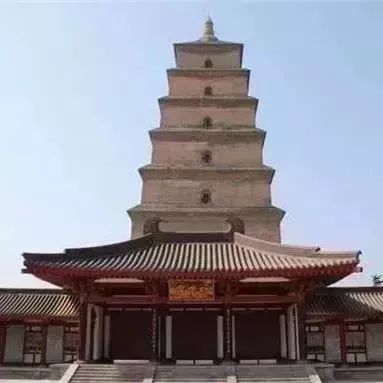Teach you the necessary skills for building a good temple
. 
It is worth paying attention to the whole process of policy, planning, financing, design and construction, and the necessary skills for the abbot of the temple
.
If you have any problems in the process of building the temple, please leave a message and ask questions
.
The official account of Source: is from the WeChat public “skyline window” ancient Tibetan architectural illustration, which is no less than the design of Tibetan Architecture in Europe
.
It has been handed down for millennia
.
It is also the essence of Chinese architectural culture
.
Tibetan people live in the cold regions, creating a warm character, a tough temperament, simple and bold, and brave to transform the environment
.
The vast Tibetan Plateau is sparsely populated, but as long as it is a place where people gather, it will naturally create a warm environmental atmosphere
.
This atmosphere is also reflected in the application of architectural and environmental colors
.
The exterior wall of the building is mainly white
.
After rough processing, the rubble is coated with white slurry
.
Starting from winter every year, the last white ash is selected on an auspicious day
.
Because the exterior wall of Tibet is narrow at the top and wide at the bottom, the wall forms a small slope
.
People stand on the roof or wall and pour slurry from top to bottom with barrels filled with white paint, which is very bold and rough
.
On the upper edge of the house, the big noble manor has a circle of bianma branches, and the top line is painted earth red
.
There are two red and black strips about 5cm wide on the outer wall of ordinary residential buildings, which are crossed along the wall
.
There is a low black wall in front of the room porch
.
Gorgeous color paintings in red, yellow, green and blue under the eaves of the porch
.
Indoor Liang Fang’s gorgeous color paintings, combined with the color of furniture, form a warm indoor tone, which is directly proportional to the simple and enthusiastic character of Tibetans
.
The reason for the application of “white”, “red” and “black” in architecture the three colors commonly used in Tibetan Architecture – white soil, red soil and black soil, are native to Tibet
.
The application of white, red and black reflects the three layers of the world – heaven, earth and earth
.
Each color is dedicated to a God: the application of white in Tibetan architecture comes from the worship of “Heaven God” – white year God, one of the primitive God families, on the one hand, and the influence of Buddhism on the other
.
Buddhism advocates white, and Tibetan Buddhism also regards white as sacred and noble
.
They live in snow capped mountains, drink white milk, offer white hada, and their houses are also white
.
In a scientific sense, white can resist the strong ultraviolet radiation on the plateau
.
Subjective and objective factors determine that the traditional Tibetan Architecture (outside individual temple buildings) uses white, which has been used for a long time since ancient times; The application of red in Tibetan architecture comes from the worship of “God on the ground” – “God in the red year”
.
The application of earth red may also be related to the ancient Bon religion in Tibet“ Bon religion was a primitive religion on the snowy plateau 1300 years ago
.
It divides the universe into three worlds: God, man and ghost
.
In order to avoid the invasion of ghosts, people’s faces are generally painted with Chu red dye (black in pastoral areas)
.
With the development of the times and the change of faith, this red is no longer painted on people’s faces, but it has been preserved in buildings
.
It is generally used for exterior wall decoration of palaces, temples and noble manors to show dignity; The application of black in Tibetan architecture comes from the worship of the “underground God” – the “black year God”
.
The low walls, doors and window trims in the residential courtyard boldly use black
.
The outer wall of the courtyard is also decorated with black; The application of earthy yellow (loess) is rare in the whole Tibetan area and is not used in folk houses
.
It is generally used for the external walls of Sutra halls in major palaces and temple buildings
.
At the same time, yellow is also the color symbol of yellow religion
.
The doors and windows of Tibetan buildings are decorated with black frames with small top and large bottom, which means “ox horn”
.
It is said that it can bring auspiciousness to people
.
One of the totems once believed in by Tibetans in ancient times was “yak”
.
Due to the progress of the times, the original totem was freehand painted as ox horn
.
Concise and generalized artistic image, highly decorative
.
This decoration is widely used regardless of architectural grade, and is one of the main factors in unifying Tibetan architectural style
.
It not only enlarges the scale of doors and windows, but also echoes with the upward separation of the building, and enhances the sense of stability and solemnity of the architectural modeling, which is quite unique
.
The decoration of doors and windows, the entrance door and the upper part of the window have two or three layers of small rafters, and the top layer has a small canopy, with stone chips and AGA soil as the surface layer
.
Decorate the rafters with colored paintings
.
After the small awning on the window is lifted out of the small rafters layer by layer, although it is not large, a slope is formed under the eaves, which scientifically and strictly adapts to the characteristics of the plateau
.
It makes the summer light and shadow can only shoot to the windowsill, and the interior is in absolute shadow, bringing a cool environment to people
.
And make the winter light scattered all over the house, reach the back wall and bring warmth to people
.
It also makes the color painting decoration on the small rafters selected layer by layer not cover each other
.
There are also vivid and detailed geometric patterns, rolling grass patterns and color painting decoration on the door frame and architrave
.
The “incense cloth” hanging on the upper part of the doors and windows is pleated with long strip textiles and hung on the eaves of the doors and windows
.
It is also one of the special decorations of Tibetan architecture
.
May 15 of the Tibetan calendar is the Tibetan “Linka Festival”, which means “world happiness day”
.
On this day, the incense cloth hanging on the upper part of the doors and windows will be updated
.
It will be used for a year
.
During this period, the wind, rain and sun on the plateau will tear and fade the incense cloth, and we can’t replace it at will
.
We should keep it until May 15 the next year
.
The use of incense cloth is combined with the teachings of the Tibetan Lama
.
Objectively, it not only decorates and unifies the overall beauty and environmental beauty of the building, but also protects the color of the color paintings under the doors and windows
.
When the wind blows, the fragrant cloth floats and the gorgeous color paintings are occasionally exposed, just like the fairy opening her charming eyes, which is very beautiful and moving
.
The color of residential buildings shall be simple and concise as far as possible to set off the main building
.
For example, the color of the residential buildings around Jokhang Temple is so simple that only white walls and black frames are left, and the incense cloth on the light rain canopy and the simple color paintings in the incense cloth are left to highlight the architecture of Jokhang Temple
.
The gorgeous degree of the color used in the buildings of nobles and lords is close to that of temples, but it is different from that of temples
.
The color used in the buildings of folk houses, the transition of the color used in the manor buildings of nobles and lords, the gorgeous color used in palace buildings, the solemnity of the color used in temple buildings, and different color layers of several buildings
.
In addition, due to the commonness of white walls, black door and window frames, incense curtains on doors and windows, Mani piles on the roof of each family, and colored Sutra flags filled with scriptures hung on small mani poles, the color of the whole building group has reached harmony and unity
.
Indoor beams and columns are painted with color
.
The ceiling is mostly warm color textile ceiling
.
The indoor furnishings are a multi-purpose cabinet composed of low storage cabinet “Baigang” (which can store clothes) and “qiagang” (which can store food and tea sets)
.
There are Buddhist niches and “wugudou” (Chama), a symbol of auspiciousness and harvest, as well as televisions, tape recorders, etc
.
The cabinet is decorated with carved lacquer paintings, mainly in red, with warm and gorgeous colors
.
“Jueze” (rectangular table for eating and drinking tea) and “Jiajue” (special table for eating) are placed in the middle of the room
.
The legs of the table are short and only a few inches high
.
The table is more than two feet high
.
It is inlaid with boards on three sides and has two doors on one side
.
It is tenoned and made into a shaft
.
It has no hinges and handles
.
At first glance, it looks like a floor cabinet
.
The carved lacquer paintings on the desktop and table board are the same as those on the cabinet
.
They are mainly red and have bright color
.
Except pure gold, other colors can be used and look very rich
.
The decorative patterns of wood are paved in an “L” shape from under the window to under the left or right wall with all kinds of flowers, birds and animals, figures and colorful card pads.
.



